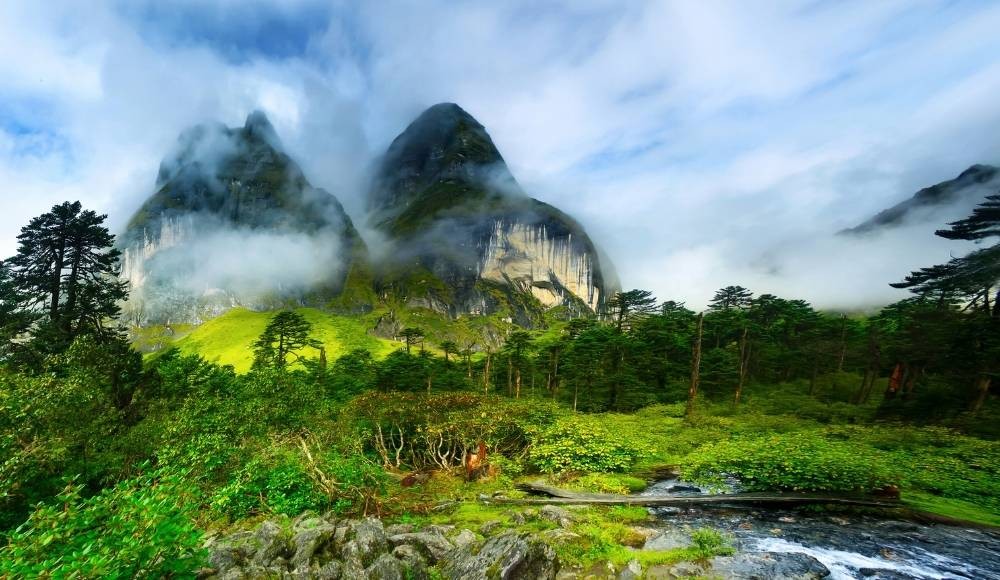All you need to know about Barun Valley | Interesting things about Barun Valley
Barun Valley, also known as the Barun River Valley, is a remote and scenic region located in the eastern part of Nepal, in the Sankhuwasabha district. It is situated on the eastern side of the famous Sagarmatha National Park, a UNESCO World Heritage Site that is home to Mount Everest and several other majestic peaks.
Here are some key details and features about Barun Valley:
1. Location and Geography:
Barun Valley lies on the eastern side of the Sagarmatha National Park, adjacent to the border of Tibet. The valley is surrounded by towering Himalayan peaks, including the prominent Mount Makalu, which stands at an elevation of 8,463 meters (27,766 feet) and is the fifth highest mountain in the world.
2. Biodiversity:
Barun Valley is renowned for its exceptional biodiversity and ecological significance. The region falls within the Makalu-Barun National Park and Conservation Area, which was established in 1992. This protected area spans approximately 1,500 square kilometers (580 square miles) and encompasses diverse habitats ranging from lowland subtropical forests to high alpine meadows and glaciers. The valley is home to several endangered and rare species, including the snow leopard, red panda, clouded leopard, Himalayan black bear, musk deer, and more than 400 species of birds. It is recognized as a global biodiversity hotspot.
3. Trekking and Mountaineering:
Barun Valley offers fantastic opportunities for trekking and mountaineering enthusiasts. The most popular trekking route in the region is the Makalu Base Camp trek. This challenging trek usually takes around 18-20 days to complete and provides awe-inspiring views of the surrounding peaks, including Mount Makalu itself. The trail takes you through picturesque villages, terraced fields, dense forests, and high-altitude landscapes. Along the way, trekkers can enjoy the serene beauty of the Barun River, cross high passes, and visit remote monasteries.
4. Cultural Significance:
The communities residing in the Barun Valley region, such as the Sherpa, Rai, Limbu, and Tamang people, have rich cultural traditions and heritage. These ethnic groups have lived in harmony with the natural environment for generations. Visitors to the valley have the opportunity to immerse themselves in the local culture, interact with friendly locals, and witness traditional festivals and ceremonies. The vibrant monasteries and gompas (Buddhist temples) scattered throughout the region provide insights into the spiritual practices and beliefs of the inhabitants.
5. Flora and Fauna:
Barun Valley boasts a remarkable array of flora and fauna. The lower regions of the valley are covered with lush forests that consist of a variety of tree species, including rhododendrons, oaks, firs, and pines. These forests are also home to diverse wildlife, such as the Himalayan tahr, langur monkeys, Himalayan pheasants, and colorful butterflies. As you ascend higher, the vegetation transitions to alpine meadows adorned with wildflowers, mosses, and lichens. Above the treeline, you'll encounter rocky terrains and glaciers.
6. Conservation Efforts:
The Makalu-Barun National Park and Conservation Area has been established to protect the unique ecology and biodiversity of the region. It plays a crucial role in preserving the natural heritage of the Himalayas. The conservation area is managed through collaborative efforts involving the government, conservation organizations, local communities, and international partners. These stakeholders work together to implement sustainable tourism practices, promote responsible trekking and mountaineering, and engage in community-based conservation initiatives that provide livelihood opportunities for the local residents while safeguarding the natural environment.
7. Accessibility:
Barun Valley is a remote and less-frequented destination compared to the popular Everest region. To reach the valley, you can take a flight from Kathmandu, the capital city of Nepal, to Tumlingtar, a small town in eastern Nepal. From Tumlingtar, you embark on a scenic drive to the village of Num, which serves as the starting point for the Makalu Base Camp trek. The trek itself typically takes around 10-20 days, depending on the chosen itinerary and the pace of the trekker. It is recommended to be physically fit and acclimatize to the high altitudes before undertaking the trek.




.jpg)



